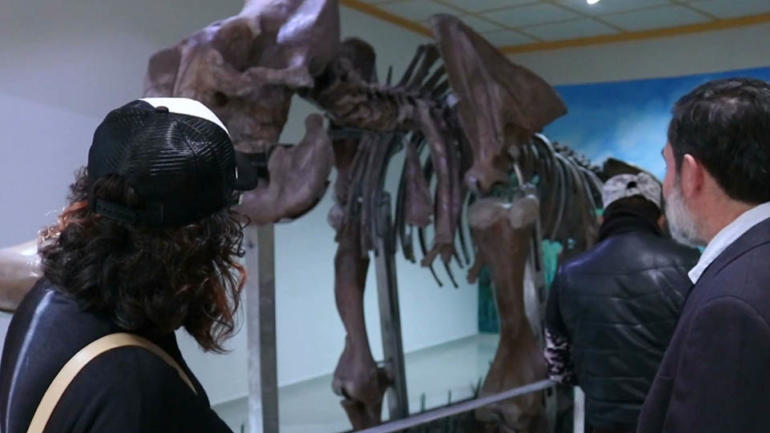Two long years of work is now paying off — the skeleton of a woolly mammoth – found north of Mexico City – is on display in a museum. The 14,000 year-old bones are providing new information about the region’s history. CGTN’s Alasdair Baverstock has details.
In 2016, Ernesto Vargas was digging the foundations for a drainage ditch, when he came across a discovery that could rewrite history. Beneath his shovel was the preserved skeleton of a woolly mammoth. Mexican archaeologists believe the remains are about 14,000 years old.
“There were always rumors that mammoth bones were around here, but we rarely saw any,” said Vargas. “But when you see some for real, it’s amazing. You say “wow, they really did exist!”
The remains of the woolly mammoth were scattered, a vital element in the find according to Luis Cordova, who led the excavations.
“When we look at how the bones were found, we can surmise that the animal was butchered by primitive hunters of that age,” said Cordova. “This makes it an important find, because even though they are not human remains, the human activity is reflected, and it tells us that 14,000 years ago, people were living in this region.”
The earliest human remains to have been found in North America currently date to 13,000 years ago, and although the mammoth’s dismemberment demonstrates the presence of humans, academics believe people may have been here for as long as 25,000 years.
After two years of painstaking excavation, the woolly mammoth is now on display in a museum in the town of Tultepec, north of Mexico City.
“It makes you feel very small, and shows you that we aren’t the center of the universe, as many people think,” said visitor Alexandra Almonte. “It shows there are bigger and more beautiful things in the world.”
The exhibit, Tolin, the Tultepec Mammoth, is free to the public. The display serves as a reminder to Mexicans of how far back their roots extend on this continent. The mammoth’s discovery has challenged historians’ understanding of mankind’s presence here in the Western Hemisphere, and as Mexico, a country rich in archaeology, opens more and more windows into the past, history books are likely to be rewritten.
 CGTN America
CGTN America

